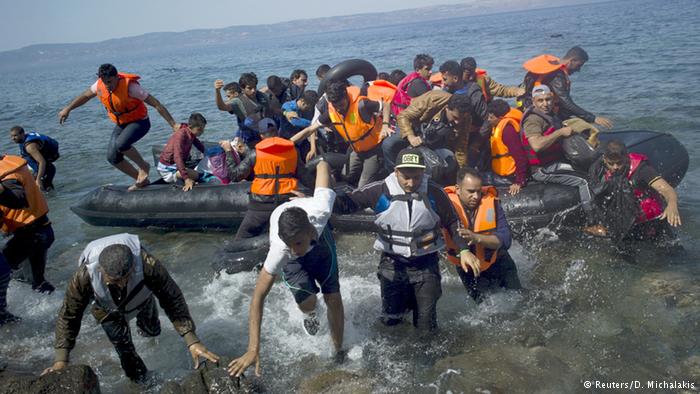BY PHILLIP CONNOR AND JENS MANUEL KROGSTAD
The United Nations adopted a resolution in 2000 marking June 20 as World Refugee Day. With the number of displaced people at a record 65.3 million in 2015 – a total that counts both those living inside and outside of their home countries – World Refugee Day has gained new prominence as countries, including the U.S., have taken in large numbers of people.
Here are some key facts about refugees arriving in Europe and the U.S. from around the world:
1 
2 
3 Europe has seen a rise in the number ofunaccompanied minors seeking asylum, with almost half coming from Afghanistan. Since 2008, about 198,500 unaccompanied minors have entered Europe seeking asylum, with nearly half (48%) arriving in 2015 alone. Nearly 7% of all first-time asylum applications in 2015 were from unaccompanied minors, the highest share since data on accompanied minors became available in 2008.
4
Sweden saw the greatest percentage-point change, with the foreign-born share of its population rising from about 16.8% in 2015 to 18.3% in 2016. Norway and Austria also saw the immigrant shares of their populations rise about 1 percentage point each during this time. But increases were small for France and the United Kingdom because they did not take in a large number of asylum seekers. By comparison, the immigrant share of the U.S. population increased by 1 percentage point over a full decade, rising from 13% in 2005 to about 14% in 2015.
5
6 European countries overwhelmingly disapprove of how the EU is dealing with the refugee issue, with low marks given by people in all 10 European countries surveyed by Pew Research Center in 2016. The highest levels of disapproval came from the Greeks (94%), Swedes (88%) and Italians (77%). The strongest support for EU management of the refugee crisis was in the Netherlands, with 31% approval.
7 The countries of origin of refugees coming to the U.S. have shifted during the past three decades. The annual number of refugee arrivals in the U.S. peaked at about 210,000 in 1980 as a result of a large wave of refugees from Vietnam and Cambodia. In the 1990s, an influx of refugees from Europe came to the U.S. due to political turmoil in the former Soviet Union and the genocide in Kosovo. After the 2001 passage of the Patriot Act, the annual number of refugees allowed into the U.S. dipped dramatically to fewer than 30,000 refugees in 2002 and 2003. But upticks in refugee arrivals started again in 2004 with a wave of Somali refugees. In 2008, thousands of Burmese and Bhutanese were granted refugee status. Of the more than 40,000 refugees who have been admitted to the United States so far in 2016, the largest numbers have come from Burma (Myanmar), the Democratic Republic of the Congo and Somalia. (It should be noted that the U.S. Code defines a refugee differently and uses a different process in accepting refugees than the EU).
8 The U.S. public has seldom approved of welcoming large numbers refugees. In the aftermath of the November 2015 Islamic State attacks in Paris, 53% of Americans said they didn’t want to accept any Syrian refugees at all, and an additional 11% said they would accept only Christian refugees from Syria, according to a Bloomberg Politics poll. A look back at U.S. public opinion from previous decades shows that Americans have consistently opposed admitting large numbers of foreigners fleeing war and oppression, regardless of official government policy.


